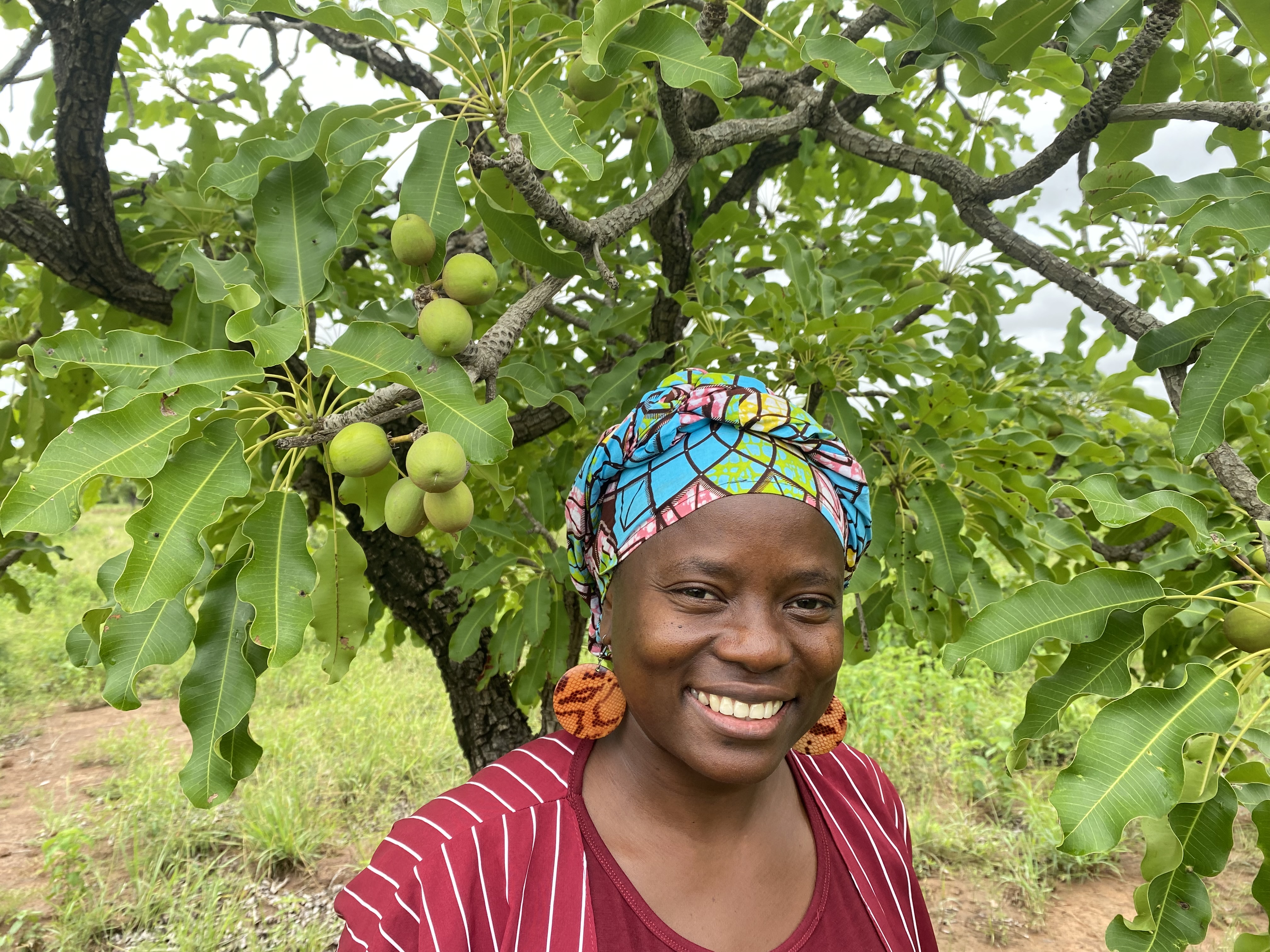
Interview with Barbara Macon, Sustainability Coordinator at Bunge
Shea is a raw material used in the food and person care industries. Bunge operates a Shea sourcing and processing facility in Tema, Ghana, and has in place initiatives to produce in a sustainable manner and contribute to the support and growth of the local communities. Bunge believes the key to building a better tomorrow for shea communities is by being deeply invested in their growth and prosperity. This led to the creation of their “Where Life Grows” program, which empowers shea collecting women and future generations to create socio-economic value in their communities and conserve and regenerate the shea landscape in the region. In this special interview, we sat down with Barbara Macon, Sustainability Coordinator at Bunge who runs the implementation of on the ground activities of the “Where Life Grows” program in the West African region.
It’s great to talk to you Barbara. Why don’t you tell us a little bit about your role and the Bunge program with Women in West Africa?
My role is to support the development of Bunge’s sustainable shea strategy and initiatives in the West Africa region, and more specifically, to coordinate the implementation of activities of the company’s “Where Life Grows” program in Ghana, Togo, Benin and Nigeria. The activities focus on empowering women and future generations, creating socio-economic value at origin and conserving and protecting the shea landscape. Our ambition is to have a positive impact on 400,000 shea collecting women and their families by 2030. For that, we are developing several initiatives, such as the “Women cooperative project” that we started in Ghana in 2021. We develop a direct link with women shea pickers and help them organize themselves into official business cooperatives. We train them to manage their own business organization to create a sustainable business for themselves and their children, and equip them with education and tools to succeed.
This aligns with the United Nations Sustainable Development Goals to ensure women receive quality education, especially in areas where women have struggled to have access to it. Many women did not have the opportunity to get education, yet they manage their own business activities and make products that are used around the world. Bunge supports these women with tools and training on how to form officially registered business cooperatives allowing them to get direct access to Global markets, financial support and generate an income all-year round.
Are there any stumbling blocks or themes blocking these women from reaching their potential?
One of the biggest challenges is the cultural environment. In these regions, women are expected to raise a family, and not necessarily to play a specific role in an agricultural business. However, after they have access to knowledge, they realize how capable they are and start to implement what they learn into their everyday activities that can then be further expanded into the next generations.
Are there any lessons you’ve learned from this process that have helped your personal development?
I learned about happiness. I learned to listen to people, to share with others, to be content with your life and realize the beauty of human beings. Those of us who live in the city, have access to infrastructure, water, electricity… Naturally, we get used to it, and tend to complain and want more. During this journey, I have met women who are happy with what they have. They have their challenges, but that doesn’t stop them from enjoying life and welcoming you into their home. Happiness comes from peace within.
I also learned how quickly they understood their role in the business and their potential for growth. We collected the first nuts from them in September 2022 and in January 2023 they had used the money they obtained from the nuts to buy Soya or Soy from their husbands and sell it. I was impressed and proud to see how they reinvested their savings and diversified their business.
How does the program work? How do you find the women in this initiative?
To succeed in this project, we must first develop a direct relationship with the women involved. However, we cannot do everything alone. We are working with NGO’s and we connect with people who are already working in these areas. My role is to coordinate this process and bring all the stakeholder together – shea collecting women, NGO’s who can deliver the training and other services, local farmers, logistic partners, etc. and help them understand and implement sustainability practices today for a better tomorrow.
I’m out in the field about 2-3 weeks per month. If you really want to work with local communities, in this case the women, you have to be in close contact with them, spend time with them to understand how they work. We started with two villages and from there I got calls from women from other villages that wanted to get involved. We encourage them to join, train and participate.
Are you on track to reach your goal of training 400,000 women by the end of 2030?
We are! The positive aspect of that is we are not only in one country, but we are also reaching women in seven countries! Women’s needs are different from country to country, so we must adapt based on women’s needs.
What are the main challenges you have to overcome when you go to these villages?
The first challenge is cultural. We need to involve and educate local leaders, husbands and youth from the beginning about the project and its benefits, to get them on board with the women’s participation. We do this together with the rest of stakeholders and partners with whom we also collaborate to implement the project and professionalize the cooperatives, like the Global Shea Alliance (GSA), GIZ, and Agriterra.
The second challenge is infrastructure. Unfortunately, in most villages, we don’t have the necessary structure to carry on meetings and trainings. We are trying our best to adapt our plans and move to different areas that have an appropriate environment.
The third challenge are the usual women’s working conditions in the local industry. Women pick up the nuts by hand and use firewood to parboil the shea nuts. So, we are working to improve these conditions with new practices and providing them with tools that we import from other countries. For instance, cookstoves that are more environmentally friendly or shea rollers, a tool that allows picking the nuts standing up without using theirs hands directly and protects them from possible bites from scorpions and snakes.
Do you have any success stories you care to share with us from the program?
The program has been going on for two years, so we have success stories, but we like to call them good results for now. I will call them successes when in five years and beyond, we can see substantial progress. A young lady we worked with in one of the villages produced 2 bags of shea nuts in her first year. In the second year she produced 14! We teach them also on the importance of product quality as the nuts will be used as a food ingredient to feed people. These 14 bags reached premium quality! She started crying when she received her money. She really understood the benefit of the cooperative and promised next year she would double her capacity!
If I were to start a program like this, what advice would have for me?
You have to have your heart set on it. If you go for a business mindset, they will not even follow you! If your heart is in it, you listen to them and understand their culture, you will be much more successful.

